*The explanation here is elaborated based on JICA Research Institute's Publication "Japan's Triangular Cooperation Mechanism: With a Focus on JICA's Activities (Author: Shunichiro Honda, Published: April 2014)
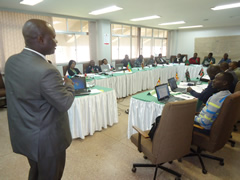
Lecture by the Kenya Forestry Research Institute (KEFRI) to the counterparts from other African countries
1. Operations of Triangular Cooperation (TrC)
JICA undertakes TrC activities in a variety of forms. In the early years, it was mostly limited to the support of stand-alone training programs offered by Southern countries and the dispatch of a limited number of southern experts. During that time, JICA's TrC mostly aimed at the dissemination of knowledge initially developed through JICA's prior bilateral technical cooperation. Since the 1990s, however, JICA has diversified TrC practices. In order to respond to the variety of development needs in developing countries, JICA has introduced more complex patterns of TrC practices, such as regional multi-stakeholders' networks on specific themes. It also began to provide assistance to Capacity Development efforts of Southern partners in their South-South Cooperation planning and management.
Key patterns of JICA’s Triangular Cooperation
*In the diagrams listed below, "J" stands for Japan and "S" stands for southern partners. Arrows represent the flow of personnel, equipment, materials, and other kinds of input. Areas enclosed by dotted red lines indicate the scope of JICA's direct engagement.
a) Dissemination of excellent practices (Figure 1)
This has been the most standard form of JICA's TrC. This framework allows the dissemination of knowledge co-created through prior technical cooperation between Southern partner(s) and JICA to other beneficiary countries in the South. Training and the dispatch of experts are the usual instruments used for this pattern.
This pattern often develops into a regional network as in d) below.
> Example
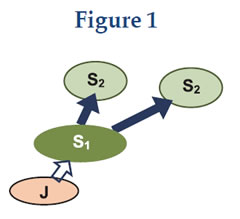
b) Collaborative support among Japan and Southern development partners (Figure 2)
This is another pattern in which JICA and Southern partner(s) jointly support a beneficiary country through strategic collaboration as equal partners. As many developing countries have developed into middle income countries with unique technological and managerial strengths, it has become more beneficial to partner with these emerging countries in seeking the synergy of knowledge from both Japan and partner country(ies).
> Example
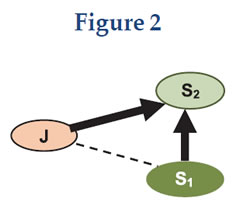
c) Bilateral technical cooperation (TC) project integrating Southern knowledge (Figure 3)
With the objective of enhancing the impact of JICA's bilateral TC project, JICA mobilizes knowledge resources from Southern partners, either through Third Country Training Program (TCTP) or Third Country Expert Dispatch (TCED), in a field where Japan may not have a comparative advantage or readily available good practices relevant to the beneficiary country concerned.
> Example
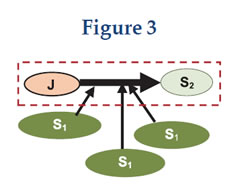
d) Network / platform among Southern partners (Figure 4)
JICA has applied more complex forms of networks or platforms in recent years. In many of these patterns, no single Southern partner assumes the role of central knowledge dispenser; rather, the alliance comprises a number of interested parties interacting among themselves, each bringing their own strengths and unique experience. In other cases, the network mechanism may be introduced with the aim of connecting already ongoing and established practices in similar fields within the country. This has increasingly become one of the standard patterns of JICA's larger scale TrC projects, being implemented in various sectors and regions.
> Example
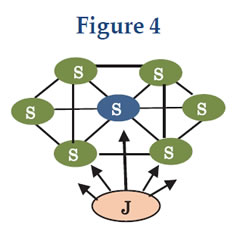
JICA's Capacity Development (CD) support for South-South Cooperation
e) Support for South-South Cooperation (Figure 5)
Apart from the TrC types described above, JICA has also extended complementary support to technical cooperation among developing countries. The objectives of this pattern are twofold. Firstly, it allows JICA to collaborate with Southern partners even in fields where Japan may not have a pronounced comparative advantage. Second, it provides Japan with opportunities to support the Southern partners' CD through complementary support of their SSC practices.
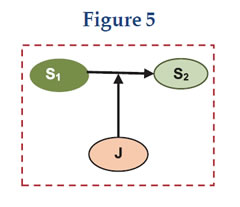
f) Support for SSC organizational Capacity Development (Figure 6)
JICA has also assisted the CD efforts of Southern partners more directly, dispatching a number of technical cooperation experts to share Japan's ODA experience and practical approaches to planning and managing cooperation activities. It has also accepted key personnel at CD workshops for SSC in Japan and elsewhere.
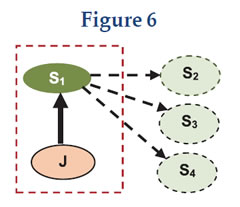
Major aid instrument for TrC engagements
JICA is combining various aid instruments to support the diverse patterns of TrC. Among these instruments, training and expert dispatch have been the main types of JICA's TrC activities. In recent years, however, JICA is increasingly applying more complex types of TrC projects and programs combining multiple instruments.
(1) Third Country Training Program
JICA has implemented the major part of its triangular training programs through what it calls the Third Country Training Program (TCTP) scheme, forming the core of JICA's TrC. TCTP has been the main instrument for TrC pattern a) and has also been widely deployed in other patterns. TCTP is undertaken through cost-sharing between JICA and the host country. It includes open or semi-open training programs ("group training" in JICA's operation terminology), and tailor-made training, specifically designed for a specific country or organization ("individual training" in JICA's terminology). The number of participants in TCTP supported by JICA has been increasing as a general trend, and its average during 2008-2013 is about 3600.
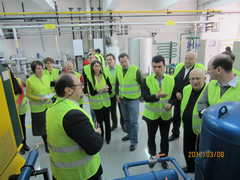
Third Country Training Program by Turkey on Energy efficiency and management in industry
(2) Third Country Experts Dispatch
JICA has assisted the dispatch of Southern experts by partner countries through the scheme called Third Country Experts Dispatch (TCED).In comparison to TCTP, the total number of dispatched TCED personnel has been relatively limited, and varies year by year. (60-140 personnel per year)
(3) Technical Cooperation project (s)
In order to provide more systematic and flexible assistance to address development challenges, it is increasingly common for JICA to engage in TrC through a JICA's technical cooperation project (TCP) scheme. TCP is a multi-year scheme which can package a range of technical cooperation instruments including the dispatch of experts, training, equipment, and complementary financial assistance. Moreover, a single project or program cannot effectively manage and coordinate continuous activities of knowledge sharing and dialogue among multiple stakeholders from several countries. Therefore, JICA gradually began to design more extensive initiatives, consisting of multiple projects and programs.




scroll